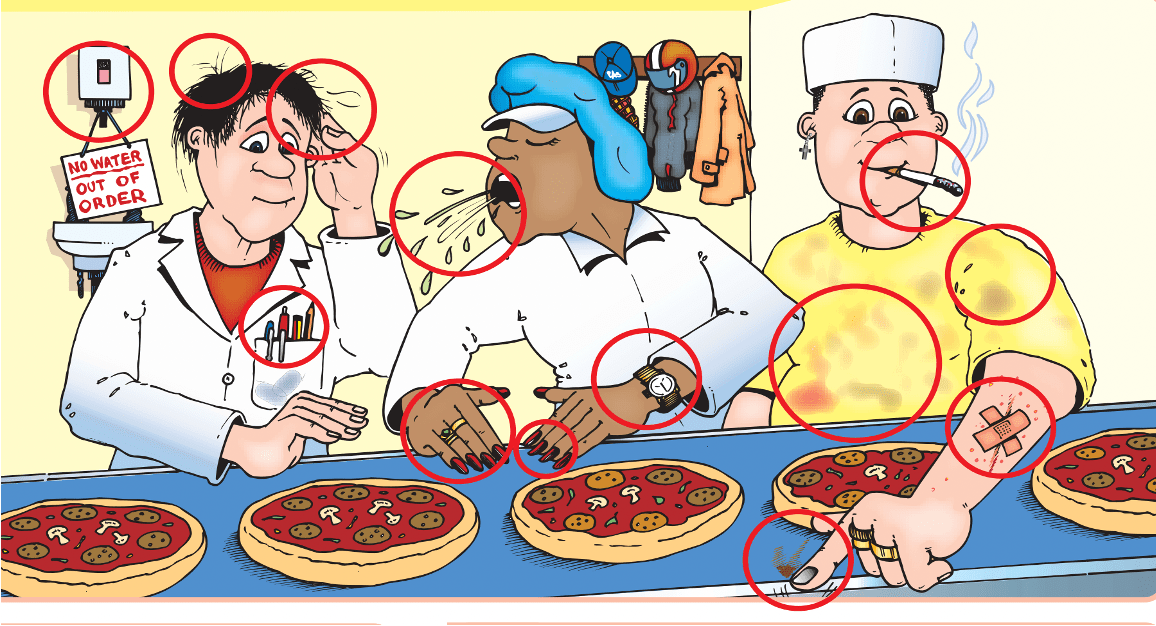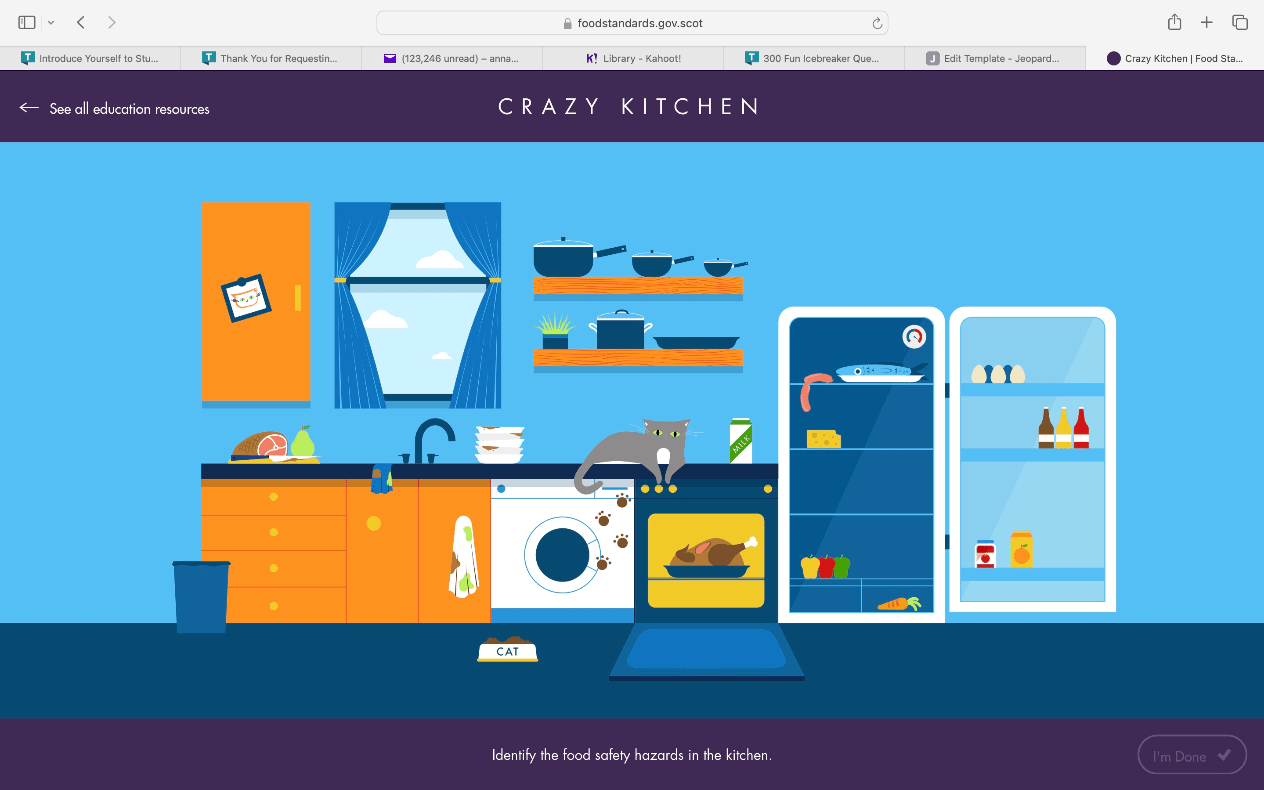How many units are there in the course?
3
Name two categories of hygiene
Personal hygiene
Kitchen hygiene
You use this to fold flour into a Swiss roll mixture
A metal spoon.
Name a wet method of cooking
Boiling
Steaming
Poaching
Name the 3 areas for storing food in the kitchen
Fridge
Freezer
Cupboard/dry store
What is the name of the first unit?
Cookery skills, techniques and processes
Explain the difference between the two types of hygiene.
Personal hygiene: keeping your body clean
Kitchen hygiene: keeping your environment clean
This is important to prevent contamination and the possibility of getting food poisoning.
You use this to coat a gateau in cream
A palette knife
Name 2 dry methods of cooking
Baking
Grilling
Name 3 reasons that storing food correctly is essential
To ensure food hygiene
To prevent spoilage
To prevent the risk of food poisoning
What is the name of the second unit of the course?
Understanding and using ingredients
 Name 3 personal hygiene rules
Name 3 personal hygiene rules
Wash hands
Tie up hair
Wear protective clothing
You use this to beat eggs
A balloon whisk
Describe the difference between mixing and blending
Mixing: combining ingredients evenly with a spoon
Blending: combining dry ingredients with a liquid to form a smooth paste
Describe which foods should be kept on which shelves in the fridge.
Top shelf - cooked meats, ready-to-eat foods, high-risk foods
Middle shelf - dairy products
Bottom shelf - raw meat
Salad drawer - unwashed vegetables/fruit
What is the name of the third unit?
Organisational skills for cooking
 Name as many hazards as you can!
Name as many hazards as you can!
Use the correct chopping boards
Keep raw and cooked food separate to prevent cross-contamination
Always cook meat to 75° and reheat to 82°
Keep the fridge temperature between 1-4°
Name 4 pieces of equipment you need when chopping vegetables
A brown chopping board
A wet paper towel/netcloth to prevent slipping
A vegetable knife
A bowl to collect peelings/waste
Describe what it means to "sweat" and "saute" vegetables.
Sweat - with a lid, vegetables don't brown
Saute - a method of cooking in a little oil in a frying pan. It browns the food and seals and develops flavour.
Where can you find information about where to store food correctly?
On the food label
Explain what happens after you have been assessed on the three units.
You will do the course assessment - a practical activity. This means you will have to plan, produce and serve a 3 course meal for 4 people in 2 1/2 hours.
Name 5 kitchen safety rules
Keep pot handles facing away
Turn off electrical appliances after use and keep away from water
Keep animals/pests away from food
Always use clean dishcloths and tea towels
Use the correct coloured chopping board
Wash knives after chopping raw meat to prevent cross-contamination
Describe the difference between a chef's knife and a vegetable knife.
Vegetable knife: a small knife with a plain edge ideal for peeling or other smaller, trickier jobs such as removing seeds from a chilli or de-veining prawns. 6-10 cm long
Chef's knife: a bigger knife which is also considered to be all-purpose, usually around 20cm long. Curved blade to allow the chef to rock the knife on the cutting board.
Identify 4 reasons that we cook
To improve texture
To improve flavour
To kill bacteria
To make the food easier to digest
What is the correct temperature for fridges and freezers?
Fridge 1-4°
Freezer -18°